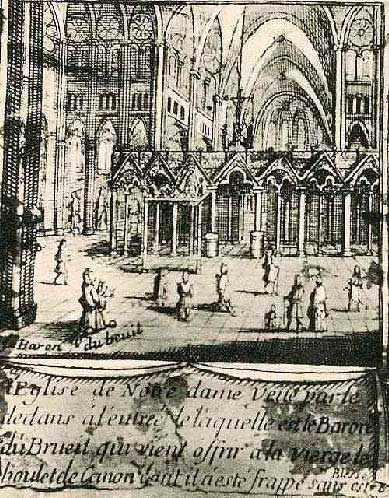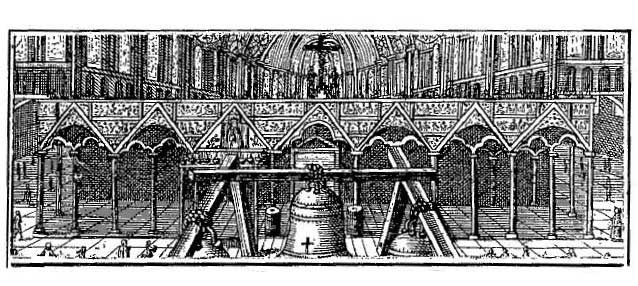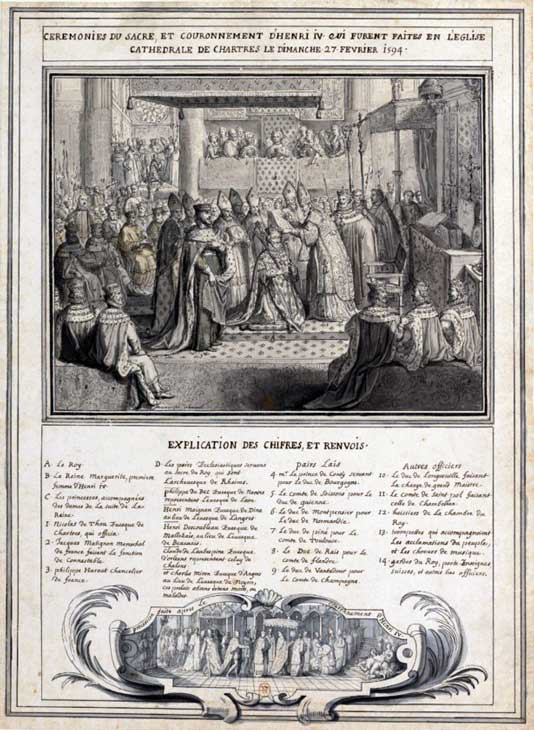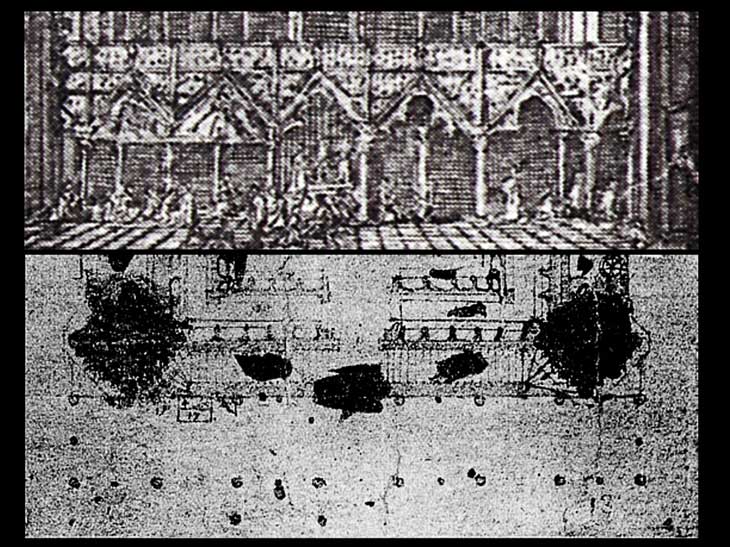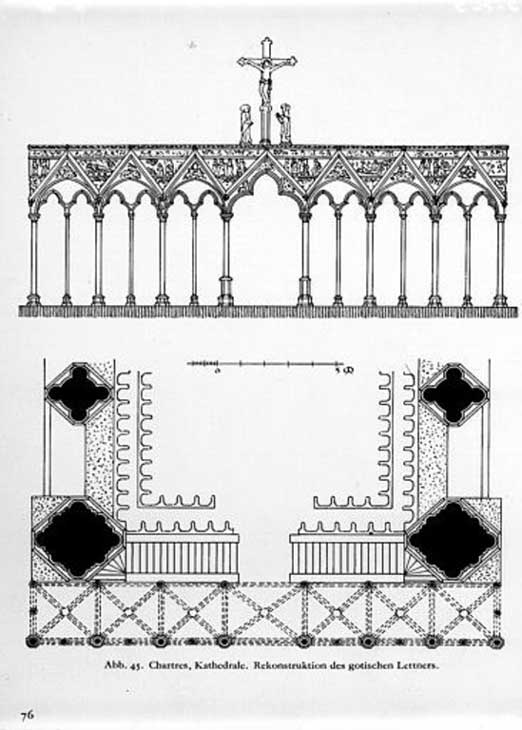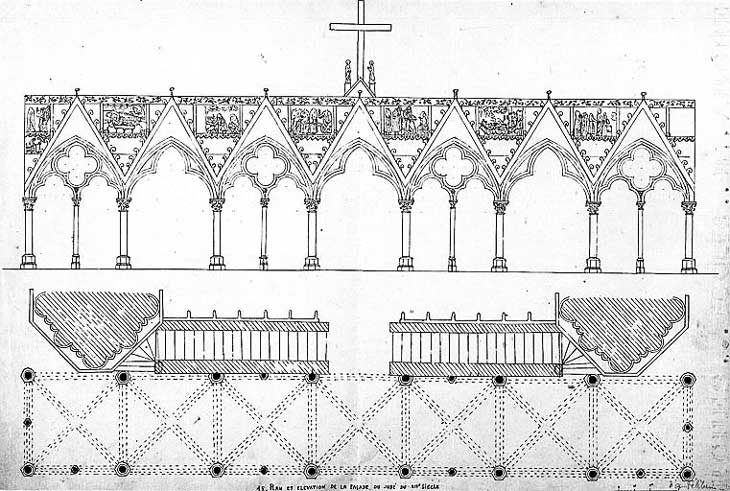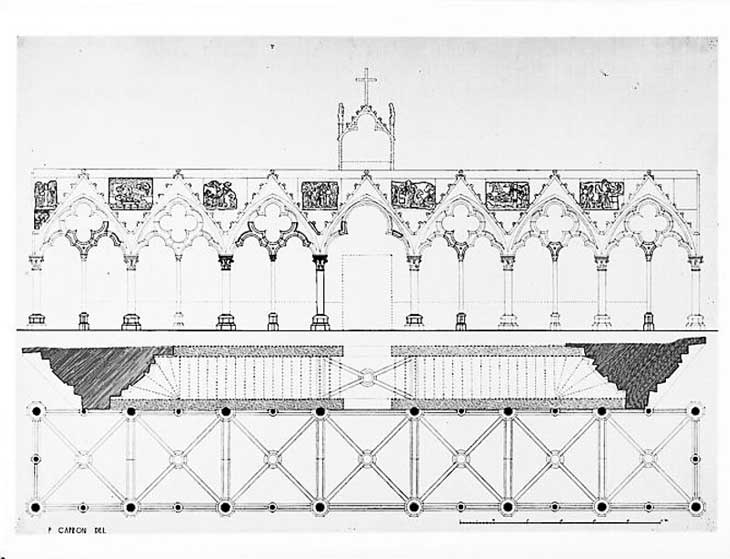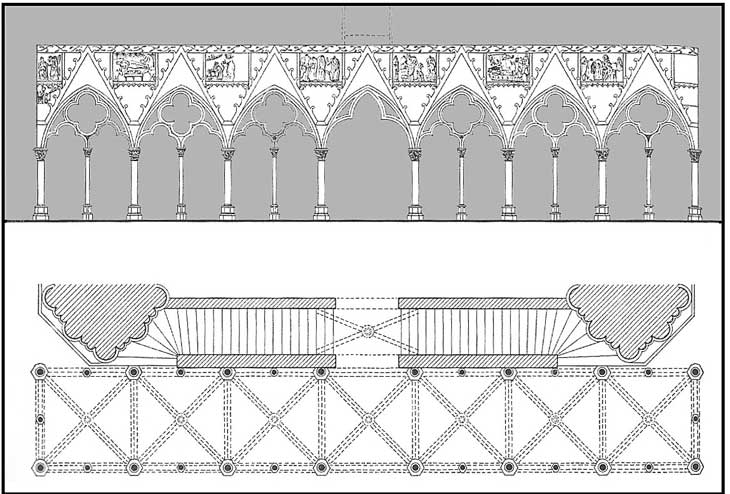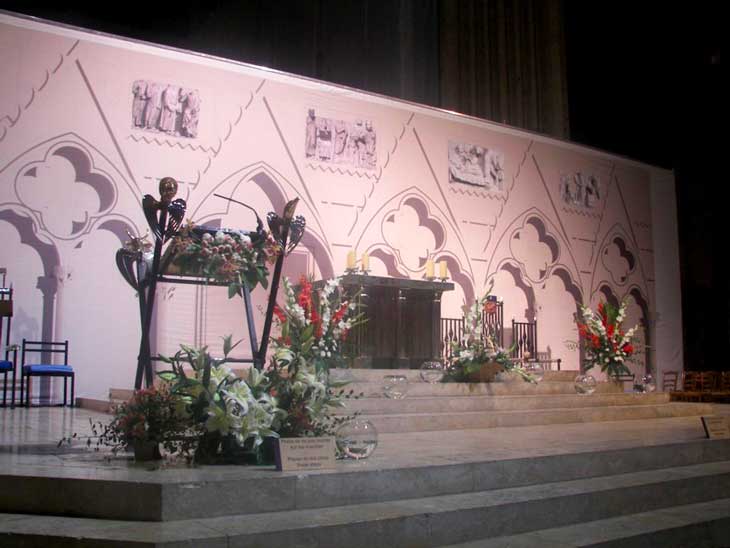During the restoration of the choir & high choir between 2009 and 2011, a printed tarpaulin had been installed in front of the choir, allowing to imagine what was the former rood screen of the cathedral.
Here are all the keys to understand the history of the rood screen – with some little known pictures…
About the rood screen of the cathedral
When entering the doors of Notre-Dame, the visitor is struck by the length of the vessel: more than 100 meters to the high altar, located at the back of the choir. This is to forget that when the building was built, a ‘screen’, more than five meters high, blocked the entrance to the choir. As the iconostasis still does in the liturgy of the Orthodox Churches, the rood screen preciously enclosed the essence of the mass, the mysterious aspects of which were to be emphasized. Its very name comes from one of the few words that were pronounced – in Latin – to all those present, from the platform that covered it: “Order, Lord, to bless”… The rood screen of Chartres (c. 1230-1240) was therefore not an exception, but it was probably one of the most beautiful…
The Council of Trent, in the 16th century, ordered that the celebrations be made accessible to all participants – so that the glory of God could be expressed in the pomp and circumstance and that this glory could lead to true emotion. This is the time when the Eucharistic adoration was born: it is necessary to see all the gestures of the cult, in particular at the time of the consecration of the host and the wine. The rood screen suddenly became completely out of step with the times. In Chartres, as in the majority of episcopal sees (Bourges, Amiens…), it was not until the middle of the 18th century that the decision was made to demolish it, on the occasion of a total reorganization of the sanctuary – in keeping with current tastes. In April 1763, the bishop approved the demolition project proposed by the canons, who also pointed out the risks of a collapse: the rood screen eventually showed signs of fragility. It was replaced (1767-1769) by an important iron and copper gate with gilding, framed by two sculpted massifs (all installed on the first floor of the south tower).
to be continued…
